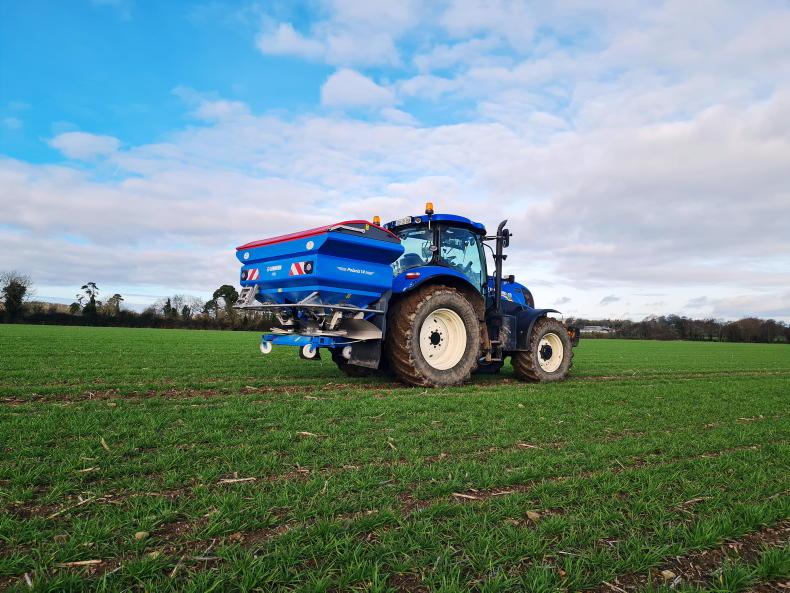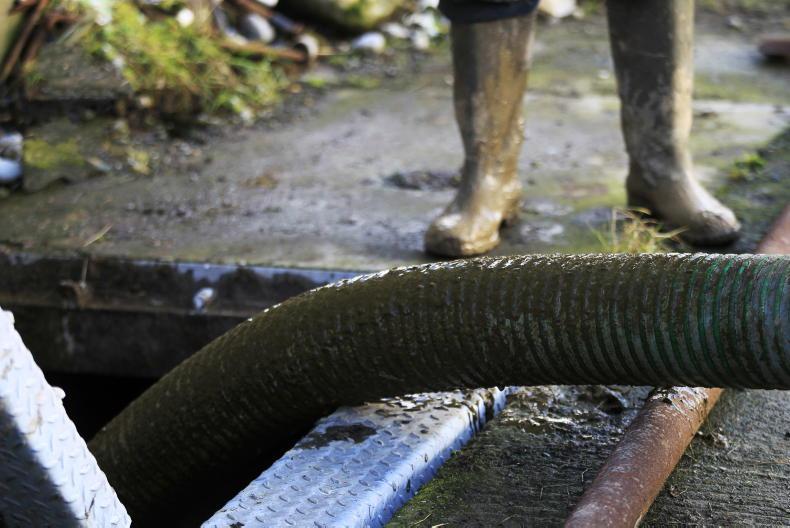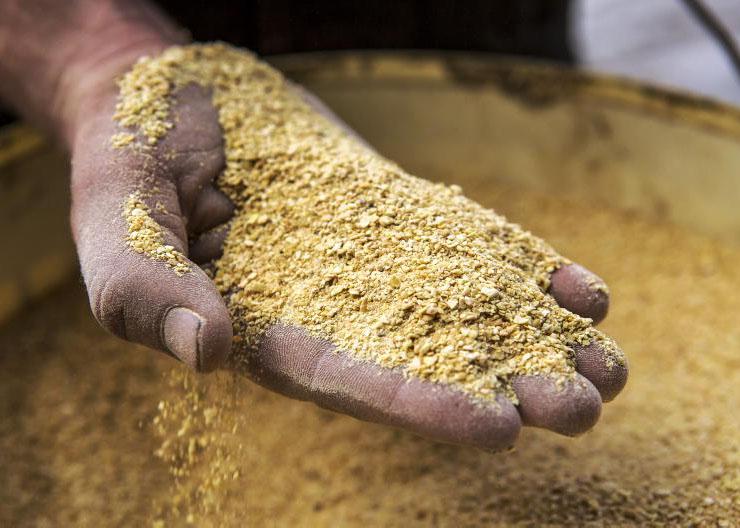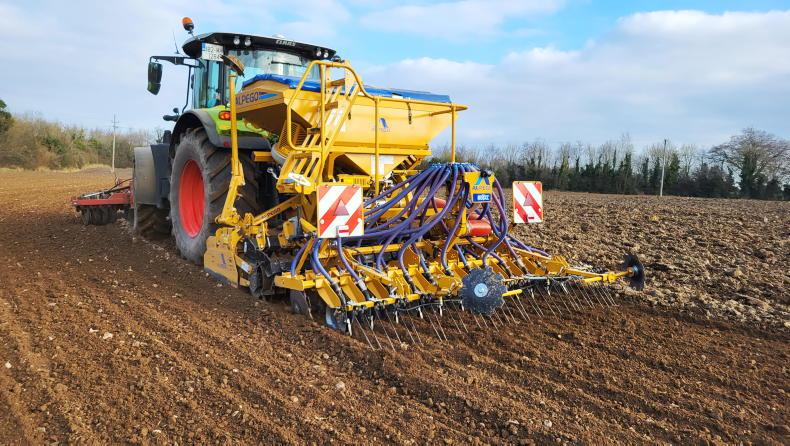Tillage farmers are having to move on fertiliser purchases at present. Prices are expected to drop, but the drop is not coming in time for tillage crops. Winter crops are now receiving nitrogen and most have received compound.
CAN would most likely have been used by the majority as the first bit of early nitrogen to go out with phosphorus (P) and potassium (K) in many cases. However, there are savings to be made by moving to urea on the remainder of nitrogen applications.
Teagasc tillage specialist Ciarán Collins has carried out some calculations on the difference in spends between urea and CAN.
He noted that based on Teagasc costs and returns figures, a winter wheat grower could make massive savings switching from CAN to urea.
He said a winter wheat grower switching from CAN to urea for the top dressing of the winter wheat crop could save over €7,000 on 40ha of winter wheat.
Ciarán explained this would be over €3,000 on 40ha of spring barley.
Approximate current nitrogen prices:
CAN - €760/t (€2.83/kg of N).Urea - €840/t (€1.83/kg of N).Protected urea - €910/t (€1.98/kg of N).To put this into perspective, let’s say you have a crop of spring feed barley. You are allowed spread 135kg/ha (109 units/acre) under index 1. Some 50kg/ha (40 units/acre) goes out in compound as CAN.
Another 85kg/ha (69 units/acre) of nitrogen is needed in straight nitrogen. The difference in cost between CAN and protected urea is €1/kg at the prices listed above, so a saving of €85/ha can be made by switching to urea. Multiply that by 40ha and the farmers can save €3,400 on that spring barley.
The saving by moving to protected urea is less, but still very significant. The difference in cost between CAN and protected urea is 85c/kg. So, across the same 40ha of spring barley that means €2,890 can be saved.
Protected urea offers more security in terms of N loss to the air. Protected urea can prevent ammonia loss to air when used. However, it still needs to be applied with some rain in the forecast. Most protected urea products start to lose nitrogen when left on the ground in dry and hot conditions after two weeks or so and this is something to keep in mind.
Sulphur
Sulphur is still needed. This may be available with your urea, but can be applied with compounds as well.
Spreading widths
Urea is less dense than CAN. It’s lighter and so can be more difficult to spread, particularly across tramlines of greater than 18m. If the spreader is not set up correctly then you could be looking at stripes in the field where urea hasn’t spread the entire width between tramlines.
Carry out tray tests and change veins and discs where needed. As it is lighter than CAN, it can also be affected by wind and so spreading urea on windy days should be avoided. Growers spreading at widths of 18m or less should also carry out tray tests.
Tillage farmers are having to move on fertiliser purchases at present. Prices are expected to drop, but the drop is not coming in time for tillage crops. Winter crops are now receiving nitrogen and most have received compound.
CAN would most likely have been used by the majority as the first bit of early nitrogen to go out with phosphorus (P) and potassium (K) in many cases. However, there are savings to be made by moving to urea on the remainder of nitrogen applications.
Teagasc tillage specialist Ciarán Collins has carried out some calculations on the difference in spends between urea and CAN.
He noted that based on Teagasc costs and returns figures, a winter wheat grower could make massive savings switching from CAN to urea.
He said a winter wheat grower switching from CAN to urea for the top dressing of the winter wheat crop could save over €7,000 on 40ha of winter wheat.
Ciarán explained this would be over €3,000 on 40ha of spring barley.
Approximate current nitrogen prices:
CAN - €760/t (€2.83/kg of N).Urea - €840/t (€1.83/kg of N).Protected urea - €910/t (€1.98/kg of N).To put this into perspective, let’s say you have a crop of spring feed barley. You are allowed spread 135kg/ha (109 units/acre) under index 1. Some 50kg/ha (40 units/acre) goes out in compound as CAN.
Another 85kg/ha (69 units/acre) of nitrogen is needed in straight nitrogen. The difference in cost between CAN and protected urea is €1/kg at the prices listed above, so a saving of €85/ha can be made by switching to urea. Multiply that by 40ha and the farmers can save €3,400 on that spring barley.
The saving by moving to protected urea is less, but still very significant. The difference in cost between CAN and protected urea is 85c/kg. So, across the same 40ha of spring barley that means €2,890 can be saved.
Protected urea offers more security in terms of N loss to the air. Protected urea can prevent ammonia loss to air when used. However, it still needs to be applied with some rain in the forecast. Most protected urea products start to lose nitrogen when left on the ground in dry and hot conditions after two weeks or so and this is something to keep in mind.
Sulphur
Sulphur is still needed. This may be available with your urea, but can be applied with compounds as well.
Spreading widths
Urea is less dense than CAN. It’s lighter and so can be more difficult to spread, particularly across tramlines of greater than 18m. If the spreader is not set up correctly then you could be looking at stripes in the field where urea hasn’t spread the entire width between tramlines.
Carry out tray tests and change veins and discs where needed. As it is lighter than CAN, it can also be affected by wind and so spreading urea on windy days should be avoided. Growers spreading at widths of 18m or less should also carry out tray tests.










SHARING OPTIONS